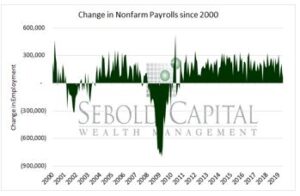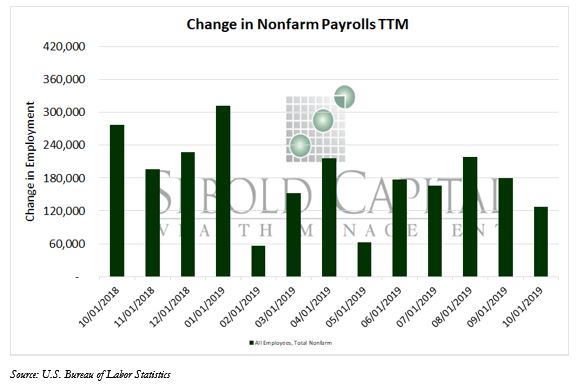 Nonfarm payrolls give an overview of the overall employment outlook of the US economy; nonfarm payrolls do not include those employed in agriculture because of the seasonal nature of their work. This report obtains these numbers from 142,000 businesses and government agencies to track the new jobs added in non-farming sectors of the economy.
Nonfarm payrolls give an overview of the overall employment outlook of the US economy; nonfarm payrolls do not include those employed in agriculture because of the seasonal nature of their work. This report obtains these numbers from 142,000 businesses and government agencies to track the new jobs added in non-farming sectors of the economy.
In October, the unemployment rate is at 3.6%, which is slightly higher than last month, when unemployment was the lowest it has been since 1969; it should be noted, however, that the unemployment rate is obtained from survey data, which could be influenced by sentiment. Nonfarm payrolls decreased by 29% in October to 128,000 new jobs, and nonfarm payrolls are down 54% from October of last year, when 277000 were added. It should be noted, however, that recent revisions reveal economic strength, as nonfarm payrolls were revised up to 219,000 (+51,000) and .
Food, social assistance, and financial activities added jobs, while motor vehicles and parts manufacturing saw a decrease in jobs due to strikes. Despite the strikes, the number of jobs added this month surpassed expectations, and thus calmed fears of an economic recession close at hand. Since both hiring and unemployment are low, it seems people are retaining their existing jobs via their developed skill-sets, and employers are not rapidly replacing them. The strength of the labor market validates the Fed’s decision to refrain from cutting interest rates until further data comes in, suggesting the economy is sustainable for now.

11/01/2019
